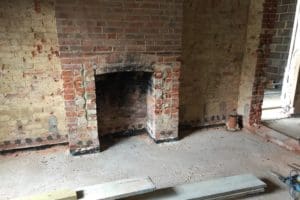Rising Dampness
Capillary action through masonry and mortar can cause groundwater to rise, resulting in rising damp. As the moisture wicks up through the materials, it evaporates, leaving any dissolved salts in the material.
The appearance of salts in the base of walls is common in many old buildings. This process has occurred in buildings throughout history, and in the mid 1800’s physical damp proof courses (DPC) began to be installed to prevent this.
A damp proof course (DPC) is an impervious layer built into a wall. It’s placed above ground level to prevent moisture rising up the wall via a capillary action. Initially DPC’s were constructed of slate, bitumen, jute and hessian. Modern DPC’s are made from polythene.
Get in touch with us
For further information get in touch with Biocraft:
How does rising damp in houses occur?
 Rising damp in walls, also called capillary ascending moisture, is the ascent of moisture through capillaries in masonry.
Rising damp in walls, also called capillary ascending moisture, is the ascent of moisture through capillaries in masonry.
Capillaries are fine, elongated tubes with very small internal diameters. In masonry, these tubes are of varying thickness and can, in some cases, form cavities. The smaller the diameter of the capillary, the more the surface tension comes into force. This capillary force, which develops due to the surface tension, creates the effect of capillary action and causes moisture to rise. The smaller the capillaries, the higher moisture rises.
Capillary rise
Capillary action means the rising of moisture in capillaries contrary to gravity. The effect of capillary action is used in medicine as well as in nature. To take a small blood sample, a very fine tube is held against a small cut, at the ear or a finger for example and the capillary action draws the blood into the small tube. Plants use capillaries as water-conducting system for watering. In masonry, which contains fine piliform tubes, capillary action can have negative effects and lead to rising damp.
Rising damp is a much disputed field, due to the common misdiagnosis of damp walls. The source of dampness should always be thoroughly investigated because an incorrect diagnosis can lead to further damage and unnecessary costs. If in doubt, please consult an expert as there are many different causes of dampness.
If you need help diagnosing rising damp, please don’t hesitate to get in touch with Biocraft.

